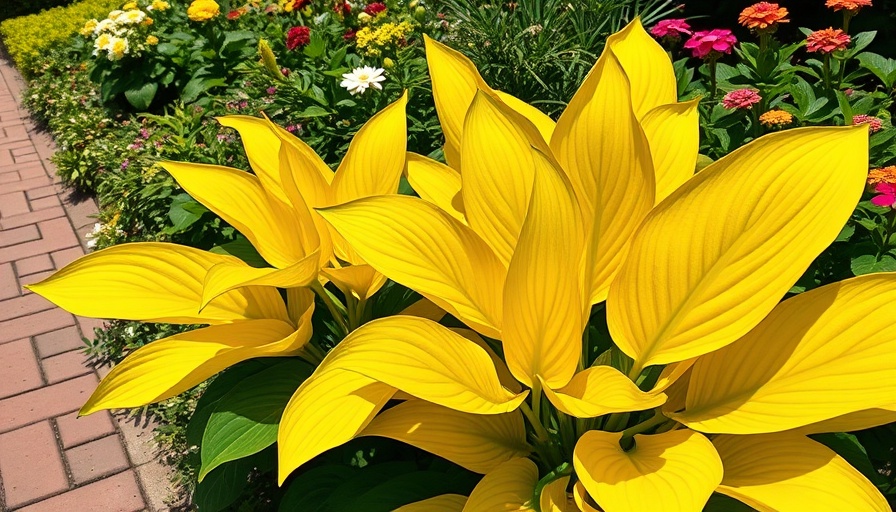
Understanding the Causes of Yellow Hosta Leaves
For gardening enthusiasts and homeowners, hostas are cherished for their lush foliage and rich colors. However, discovering yellowing leaves can be a concerning issue. While some yellowing may simply signify natural dormancy, specific problems can indicate health issues within your plants. This article will explore the nine most common causes of yellow leaves on hostas, coupled with practical solutions to restore their vibrant green coloring.
The Nine Causes Behind Yellow Leaves
When confronted with turning leaves, it’s essential to identify the root cause accurately. Here are nine culprits that may be affecting your hostas:
- Bacterial Rot - Yellowing leaves, especially those at the bottom of the plant, can be the first sign of bacterial rot caused by the Erwinia genus. This disease leads to the rotting of petioles and has a notorious smell similar to rotting vegetables. Always check your soil's drainage; excess moisture can make conditions ripe for this harmful bacteria.
- Dormancy - Hostas naturally turn yellow and fade into dormancy as winter approaches. This process can be expedited by environmental stressors such as early frosts or prolonged dry spells. If the yellowing leaves seem firm and upright, then dormancy is likely their fate rather than disease.
- Fusarium - A fungal disease that usually starts with yellowing at the leaf tips, followed by browning and degradation. Fusarium can stunt growth and requires a careful approach; affected plants should be removed to prevent spreading.
- Foliar Nematodes - These microscopic pests can wreak havoc on your hostas, exhibiting symptoms such as yellowing patches and distorted growth. Soil treatment and integrated pest management strategies can mitigate nematode damage.
- Light Exposure - Hostas thrive in shade; if they receive too much direct sunlight, the leaves can scorch and turn yellow. Understanding your planting location's light conditions is crucial.
- Over-Feeding - Though fertilizers are important, too much can lead to nutrient imbalances, resulting in yellow leaves. Knowing the right amount of fertilizer can improve your gardening experience.
- Petiole Rot - Similar to bacterial rot, but this condition specifically targets petioles, causing them to weaken and the leaves to yellow. Ensuring proper soil drainage is vital for prevention.
- Viruses - Viral infections can lead to yellowing and mottled leaves. While treatments for viral infections are limited, maintaining healthy plant practices can lower risks.
- Watering Issues - Both underwatering and overwatering can stress plants out and lead to yellow foliage. Regularly monitor your plants' water needs, adjusting as the seasons change.
Practical Solutions for Healthier Hostas
Understanding the issues is only half the battle—knowledge about effective remedies can transform your backyard garden:
- Improve Drainage: Address soil conditions by enhancing drainage. Use raised beds or amend soil with organic matter to maintain healthy hosta roots.
- Monitor Watering: Adopt a consistent watering routine. A moisture meter can help determine when your hostas truly need watering.
- Appropriate Fertilizing: Always follow application guidelines for fertilizers. Opt for organic or slow-release options for a steady nutrient supply.
- Choose Resistant Varieties: When selecting new hostas, consider varieties that are resilient to local pests and diseases, ensuring longevity in your garden.
Building a Sustainable Gardening Approach
Caring for your hostas extends beyond just addressing yellow leaves. Implementing sustainable gardening practices fosters an ecosystem that thrives without reliance on harmful chemicals. For instance, adopting climate-friendly gardening hacks not only enhances plant health but also aligns with your values as a health-conscious gardener.
Incorporating Community Knowledge
Gardening is often enriched by shared experiences. Engaging with local garden clubs or online communities can provide insights and additional support for challenges like yellowing leaves. Sharing stories of success and trial and error cultivates a sense of community and shared purpose among DIY enthusiasts.
Ultimately, understanding the turning yellow leaves of your hostas isn’t just about aesthetics; rather, it’s an opportunity to deepen your gardening skills and connect with nature. Remember, every leaf tells a story, and with proper care, those stories can lead back to rich, green foliage.
With hostas, it’s entirely possible to transform yellowing leaves back into lush greenery. Experiment with different techniques, engage with fellow gardeners, and enjoy the process of nurturing your plants.
 Add Row
Add Row  Add
Add 




 Add Row
Add Row  Add
Add 

Write A Comment